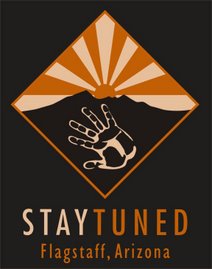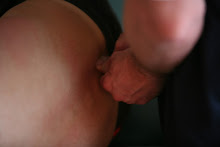
Here we are, on the front end of another great year. 2008. Again this year I will be assisting Erik Dalton, PhD. and Kim Miller, with the Freedom From Pain Institute, in providing outstanding education to soft tissue practitioners, massage therapists, physical therapists, chiropractors, personal trainers, and sports therapists. The
Myoskeletal Alignment Techniques platforms have proven to be the most accurate in assessment and correction that I have studied and used in my practice. I used to find it difficult to reproduce results from session to session. That was until I learned more of the accurate assessments, what to really look for when clients came in with specific dysfunctions and specific pain. Knowing what to look for has made all the difference. The second step is knowing what to do with said dysfunction.
Thinking "out side the box " of typical
massage therapy and using all of the soft tissue in the body to achieve results is the corner stone of the
Myoskeletal Techniques. We, as massage therapists, are becoming increasingly aware of other inert tissues.
Mechanoreceptors in the body give our brain information about the health of joints and healthy, or unhealthy, joint movement. This in turn can activate a response of many other receptors,
nociceptors tell us about pain,
chemoreceptors tell us about the bombardment of chemicals due to protective muscle guarding and so on....these are all conditions that the soft tissue community should begin to consider when treating people who are in pain. Food for thought.
And so here is our
schedule. Hope to see you therapists there!
Feb. 29 - March 2, 2008
Tucson, Arizona Vacation/ Education Destination
Massage Therapy Advanced Neck, Sciatic and Rotator Cuff
24 CE hours
Day 1… Advanced Neck Routines: Dalton’s new head & neck workshop helps therapists determine if pain emanates from pinched nerves or irritated joint receptors. Enhance your palpation skills with this innovative approach for correcting complex conditions such as “chronic cricks”, whiplash, migraines, and facet/rib pain. Pain management therapists will love this skill enhancing presentation.
Day 2…Sciatic: Simplified "back spasm" recipe for torsioned spines, locked SI joints and adhesive hip capsules. Includes innovative side-lying deep tissue massage therapists techniques & assisted stretching routines…perfect for treating large or pregnant clients.
Day 3…Rotator Cuff Corrections: New approaches for fixing impingement syndromes and frozen shoulders are introduced in this combined soft tissue and joint mobilization presentation. Dalton's unique joint capsule, ligament, bursa, and myofascial mobilization techniques will enhance your assessment, palpation and treatment skills. A must take seminar for all sports therapists! This three-day Myoskeletal Alignment Certification workshop compliments all forms of manual therapy. To register call Michael at 800-766-1942 or register at www.takemyregistration.com
March28-30, 2008
New Orleans, LA. Education- Party on the Bayou
Myoskeletal Alignment for Neck, Back and Hip Pain
24 CE hours
Day 1… Neck Pain: Dalton’s very popular “Dirty Dozen” pain-bustin’ techniques help massage therapists assess and correct neck "cricks", dowager's humps, TOS, pinched nerves, scoliosis, rib pain and more.
Day 2…Back Pain: Simplified "back spasm" recipe for torsioned spines, locked SI joints and adhesive hip capsules. Includes innovative side-lying techniques & assisted stretching routines…perfect for treating large or pregnant clients.
Day 3…Hip Pain: Learn simple myoskeletal pelvic balancing techniques that focus on eliminating joint/ ligament pain originating at the lumbo-sacral junction. Since the SI joint can become stuck “crooked” in ten positions between the innominates, pain management therapists must be armed with effective tools to fix this common complaint….Incorporate these on Monday morning and watch your practice grow.
This three-day Myoskeletal Alignment workshop compliments all forms of manual therapy.
To register call Michael at 800-766-1942 or register at www.takemyregistration.com
Don't Miss This!
Dalton's 6th Annual Costa Rica Retreat
2008 Pain Management in Paradise
Dual Workshops with Erik Dalton and Aaron Mattes-Creator of Active Isolated Stretching
Click the Link to see Brochure!!
June 6-8, 2008
Dallas, Texas Vacation while you learn...
at the world famous Cooper Clinic- Guest Lodge Hotel & Spa
Advanced Neck, Sciatic, and Rotator Cuff Pain
24 CE hours
Day 1… Advanced Neck Routines Workshop: Dalton’s new head & neck techniques help therapists determine if pain emanates from pinched nerves or irritated joint receptors. Enhance your palpation skills with this innovative approach for correcting complex conditions such as ‘chronic cricks’, whiplash, migraines, and facet/rib pain.
Day 2…Sciatic Pain: Simplified "back spasm" recipe for torsioned spines, locked SI joints and adhesive hip capsules. Includes innovative side-lying deep tissue massage therapy techniques & assisted stretching routines…perfect for treating large or pregnant clients.
Day 3…Rotator Cuff Corrections: New approaches for fixing impingement syndromes and frozen shoulders are introduced in this combined soft tissue and joint mobilization presentation. Dalton's unique joint capsule, ligament, bursa, and myofascial mobilization techniques will enhance your assessment, palpation and treatment skills. This Advanced Myoskeletal Alignment Certification workshop was designed for structural integrators, pain-management, and sports therapists.
A must take workshop event for all sports therapists!
To register call Michael at 800-766-1942 or register at www.takemyregistration.com
July18-20
Salt Lake City, Utah
Education-Relaxation Destination
Holiday Inn- Airport West
24 CE hours
Dirty-Dozen Neck, Low Back and Shoulder Routines
Day 1… Neck Pain: Dalton’s very popular Dirty-Dozen techniques help therapists assess and correct neck ‘cricks’, dowager's humps, TOS, pinched nerves, scoliosis, rib pain and more.
Day 2…Low Back Fix: Simplified "back spasm" recipes for torsioned spines, locked SI joints and adhesive hip capsules. Includes innovative side-lying deep tissue technique & assisted stretching routines…perfect for treating large or pregnant clients.
Day 3…Shoulder Pain: New approaches for fixing impingement syndromes and frozen shoulders are introduced in this soft tissue joint mobilization presentation. Dalton's unique joint capsule, ligament, bursa, and myofascial mobilization techniques enhance assessment, palpation and treatment skills for all forms of manual therapy.
To register call Michael at 800-766-1942 or register at www.takemyregistration.com
Aug. 22-24
Kansas City, Missouri
Barbecue and Blues with Erik Dalton
Holiday Inn KCI & Expo Center
24 CE hours
Advanced Myoskeletal Alignment for Sciatic, Pelvic, and Cervical Pain
This newly-added advanced class explores hidden causes of back, butt and leg pain including SI joint dysfunction. New assessment routines based on research presented at the First Fascial Conference at Harvard will look at Ascending Syndromes...pain originating in the feet and legs that affect pelvic balance and Descending Syndromes...pain originating in the head and neck creating scoliotic strain patterns that refer into the arms and thorax.
Participants will learn exciting new Myoskeletal approaches for treating soft-tissue conditions such as ligament failure, joint capsule adhesions and myofibroblast pain. A must--take class for all structural integrators, pain management and sports therapists!
To register call Michael at 800-766-1942 or register at www.takemyregistration.com
October 17-19
Atlanta, Georgia
Myoskeletal Alignment: Neck, Sciatic and Leg Pain
24 CE hours
To register call Michael at 800-766-1942 or register at www.takemyregistration.com
November 14-16
Baltimore, MD
Myoskeletal Alignment: Neck, Sciatic and Leg Pain
24 CE hours
To register call Michael at 800-766-1942 or register at www.takemyregistration.com


 (fig. 1.) Gluteal muscles. These guys get fatigued a bit in the squatting position used frequently in snowboarding. While in the squat, we are using our back foot to maneuver the tail of the board for steering. This position on the foam roller puts glute max on a bit of a stretch , as we roll the tissue all around the sacrum we also touch on the long dorsal sacroiliac ligament. This is crucial in having freedom of movement in the SI joint. In my opinion, it is a wise idea to do some type of straight leg extensions after "opening up" and "turning on" this tissue. This can be done by lying face down and doing straight leg raises.
(fig. 1.) Gluteal muscles. These guys get fatigued a bit in the squatting position used frequently in snowboarding. While in the squat, we are using our back foot to maneuver the tail of the board for steering. This position on the foam roller puts glute max on a bit of a stretch , as we roll the tissue all around the sacrum we also touch on the long dorsal sacroiliac ligament. This is crucial in having freedom of movement in the SI joint. In my opinion, it is a wise idea to do some type of straight leg extensions after "opening up" and "turning on" this tissue. This can be done by lying face down and doing straight leg raises.  (fig.2.) Heinemann, or DH danceman, says he's been getting it in his quadriceps muscles. I agree. Here we roll from above the knee to the hip and back. Easy enough. If you have not used a foam roller in the past, you may be surprised at the depth of pressure you can achieve. Tilt your body left and right a bit to get the lateral and medial tissues of the thigh. An attempt should be made to push the lateral tissues back up to the middle of the bone. Separate the bellies of the 4 quads.
(fig.2.) Heinemann, or DH danceman, says he's been getting it in his quadriceps muscles. I agree. Here we roll from above the knee to the hip and back. Easy enough. If you have not used a foam roller in the past, you may be surprised at the depth of pressure you can achieve. Tilt your body left and right a bit to get the lateral and medial tissues of the thigh. An attempt should be made to push the lateral tissues back up to the middle of the bone. Separate the bellies of the 4 quads.  (fig. 3) Knee pain may be resolved to some degree by paying special attention to the connective tissue around the knee. Just below the knee, on the outside, is the attachment of bicep femoris. This hamstring muscle has been known to cram the tib fib joint closed, reducing the available slide, shock absorbing element of this part of the "knee" joint.
(fig. 3) Knee pain may be resolved to some degree by paying special attention to the connective tissue around the knee. Just below the knee, on the outside, is the attachment of bicep femoris. This hamstring muscle has been known to cram the tib fib joint closed, reducing the available slide, shock absorbing element of this part of the "knee" joint. (fig. 4) Lats. Latissimus dorsi that is. Very interesting muscle. This dude is attatched to the arm, the low back, and the hip. So it helps in feeding, walking, rotation of the spine, side bending, so we see how this is important in snowboarding. have to eat ya know!
(fig. 4) Lats. Latissimus dorsi that is. Very interesting muscle. This dude is attatched to the arm, the low back, and the hip. So it helps in feeding, walking, rotation of the spine, side bending, so we see how this is important in snowboarding. have to eat ya know! 







